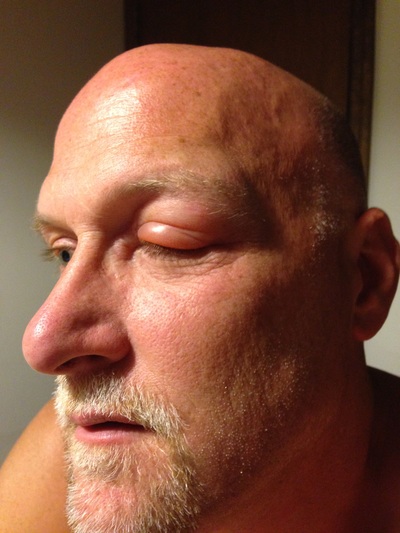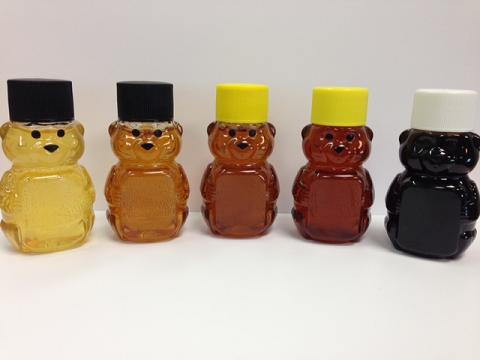Honey Frequently Asked Questions
Is our honey pure? - YES! Our honey is 100% pure bee honey -
nothing added but our passion and care.
Is our honey raw? - YES!
Is our honey local? U.S.D.A. States that produce grown within 400 miles of selling point is local. We keep bees from New York to Massachusetts which would make us local to the entire Northeast region of the United States.
Do we ever get stung? - YES! We are beekeepers, it's bound to happen!
Top Myths About Why Honey Bees Sting
Because they are angry.
Because they are hungry.
Because they like to.
The honeybee is often not the culprit of a sting. The most aggressive stinging insects are wasps, yellow jackets and hornets, not honey bees or native bees.
You might be confusing a yellow jacket for a honeybee.
Honeybees sting when they feel threatened, so respect them by keeping your
distance and never disturbing or attacking a hive.
Remember, honeybees die after they sting you.
When the honeybee stings, it cannot pull the stinger back out because it is barbed.
Not only the stinger remains but also part of its digestive tract, plus muscles and nerves.
This massive abdominal rupture is what kills the honeybee.
nothing added but our passion and care.
Is our honey raw? - YES!
Is our honey local? U.S.D.A. States that produce grown within 400 miles of selling point is local. We keep bees from New York to Massachusetts which would make us local to the entire Northeast region of the United States.
Do we ever get stung? - YES! We are beekeepers, it's bound to happen!
Top Myths About Why Honey Bees Sting
Because they are angry.
Because they are hungry.
Because they like to.
The honeybee is often not the culprit of a sting. The most aggressive stinging insects are wasps, yellow jackets and hornets, not honey bees or native bees.
You might be confusing a yellow jacket for a honeybee.
Honeybees sting when they feel threatened, so respect them by keeping your
distance and never disturbing or attacking a hive.
Remember, honeybees die after they sting you.
When the honeybee stings, it cannot pull the stinger back out because it is barbed.
Not only the stinger remains but also part of its digestive tract, plus muscles and nerves.
This massive abdominal rupture is what kills the honeybee.
Why Does Honey Crystallize?
It is natural for honey to crystallize since it is an over-saturated sugar solution. There are a variety of sugars in honey including: glucose, fructose, sucrose, and maltose. But the main ones are glucose and fructose, which together can make up nearly 70% of the honey content. Water makes up 18% or less.The glucose and fructose are the sugars that make honey sweet. Glucose is the one that influences crystallization. The more glucose in the honey, the faster your honey will crystallize.The content of fructose and glucose in honey varies from one type of honey to the other.
Click here for information about crystallization from the National Honey Board.
Click here for information about crystallization from the National Honey Board.
How to De-crystallize Honey
Crystallized honey is totally safe to eat, and can easily be returned back to a liquid state.
Honey that is in a glass jar can be brought back to liquid life by uncovering the jar and heating in a microwave on medium power for 30 seconds to 1 minute.
If you prefer the stove top method - place uncovered glass jar of crystallized honey (if it is in plastic container move to glass) into a pot of hot water (not boiling). Let it remain there 20 - 40 minutes until it is back to its liquid state.
Honey that is in a glass jar can be brought back to liquid life by uncovering the jar and heating in a microwave on medium power for 30 seconds to 1 minute.
If you prefer the stove top method - place uncovered glass jar of crystallized honey (if it is in plastic container move to glass) into a pot of hot water (not boiling). Let it remain there 20 - 40 minutes until it is back to its liquid state.
Honey Color Facts
The USDA classifies honey into seven categories of color. These are named as follows:
Water white
Extra white
White
Extra light amber
Light amber
Amber
Dark Amber
Extra white
White
Extra light amber
Light amber
Amber
Dark Amber
The color and flavor of honey depends on the source of the nectar (the blossoms) that the honey bees visit. Incredibly, there are more than 300 unique types of honey which are available in the United States, each originating from a different floral source. Honey color ranges from nearly colorless (water white) to dark brown (buckwheat), and its flavor varies from delicately mild to extremely bold, depending on where the honey bees travel during the course of their day. As a general rule, light-colored honey is milder in taste and dark-colored honey is stronger.
Honey is produced in every state, but depending on floral source location, certain types of honey are produced only in a few regions. Honey is produced in most countries of the world.
Honey is produced in every state, but depending on floral source location, certain types of honey are produced only in a few regions. Honey is produced in most countries of the world.
Below are the the most common honey floral varieties that
we offer from our local area.
To learn more about available types of honey in your area,
contact a local beekeeper or beekeeping association.
- ALFALFA Alfalfa honey is produced extensively throughout Canada and the United States from the purple alfalfa blossoms. It is light in color with a wonderful mild flavor and aroma.
- CLOVER Clover honey has a pleasing, mild taste. Clovers contribute more to honey production in the United States than any other group of plants. Red clover, Alsike clover and the white and yellow sweet clovers are most important for honey production. Depending on the location and type of source clover, clover honey varies in color from water white to light amber to amber.
- WILDFLOWER Wildflower honey is often used to describe honey from miscellaneous and undefined flower sources.
- BUCKWHEAT Buckwheat honey is dark and robust. It is produced in Minnesota, New York, Ohio, Pennsylvania and Wisconsin as well as in eastern Canada. Buckwheat honey has been found to contain more antioxidant compounds than some of the lighter honey.
- HONEY BLENDS There are many different types of honey available, however, most honey is blended to create a unique and consistent taste and color.
From a human health perspective, darker honey is usually higher in antioxidants than lighter honeys. For example, in a study done at the University of Illinois, buckwheat honey was found to have 20 times as many antioxidants as sage honey.
It turns out that Americans like light honey, the lighter the better and so water white honey does command a much higher price than darker honey. This consumer preference is similar to the American preference for the lightest maple syrup (Grade A Golden, Delicate Taste), not the darker (Grade A Very Dark, strong taste).
It turns out that Americans like light honey, the lighter the better and so water white honey does command a much higher price than darker honey. This consumer preference is similar to the American preference for the lightest maple syrup (Grade A Golden, Delicate Taste), not the darker (Grade A Very Dark, strong taste).
Our Honey Process
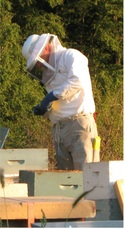
Depending upon where the honey bees decide to collect and pollinate. The resulting honey often takes on a flavorful undertone of the pollinated fruit or grain.
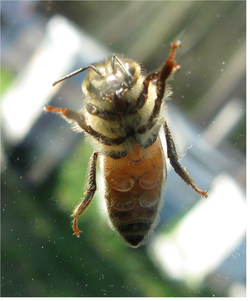
Remsburger Honey & Maple manages approximately 300 hives within 20 bee yards (apiaries). Currently we have over 18,000,000 little buzzing employees. We take great pride in our honey that is produced on the lush green pastures of the Hudson Valley in upstate New York. Our bees forage the land that generations of local farmers have worked for decades. Together, our passions combined...
We Make Life A Little Sweeter ®
We Make Life A Little Sweeter ®
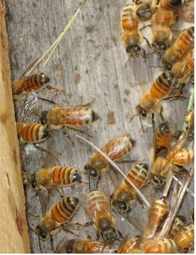
Did you know that honey bees are responsible for one out of every three bites of food taken in this country?
They are truly vital to human survival!
They are truly vital to human survival!
Is Honey Kosher?
Please read the following linked article which clarifies the question.
The article is entitled
Do Bee and Don’t Bee: A Kashrus Guide to Honey and Other Bee Derivatives
by Rabbi Dovid Heber
Please feel free to contact us with any questions or comments.
The article is entitled
Do Bee and Don’t Bee: A Kashrus Guide to Honey and Other Bee Derivatives
by Rabbi Dovid Heber
Please feel free to contact us with any questions or comments.
